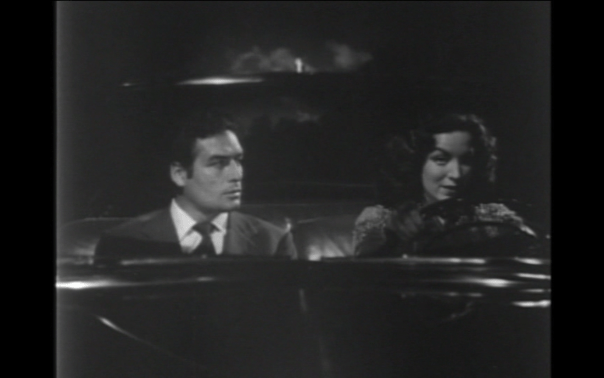A melodrama; a combination of Camille (George Cukor, 1936) and Dark Victory (Edmund Goulding, 1939), with the beautiful Jorge Mistral and the even more beautiful María Felix. He’s the bullfighter so besotted he dedicates a bull to her only to be so blinded by her beauty, he loses concentration and gets gored. She send him a check to pay his expenses but he won’t accept it. Thus their love story begins.
She triumphs nightly on stage in ‘Our Lady of the Camelias’ but in truth is ‘the most expensive woman in Mexico,’ selling her lifestyle to the highest bidder. ‘ ‘I’m bad, egotistical vain. I enjoy making fun of men and I’ve had so many lovers I can’t remember their faces. I love you but I’m very ambitious. You’ll suffer very much because I can’t deny myself anything. Flee from me! If you can’t, I only ask that you don’t reproach me anything or ask me any questions’. She continues accepting fabulous suites of jewels from endless admirers whilst saving her heart for Jorge Mistral’s gorgeous bullfighter. The maid thinks he doesn’t appreciate this enough: ‘You have the most sought after woman in Mexico and still complain. Those of you who receive love for free are vey curious. You think because you have lovely faces you get all the rights and none of the responsibilities.’
Love is the only thing that can shipwreck such a life, and so it comes to pass. She gives up everything for him. He’s still driven mad with jealousy over her past. They decide to marry but, the night before the wedding, his brother appears. It turns out, he’s one of her previous lovers, and spent three years in jail as a result of a robbery he committed so he could buy her favours. She’s forced to leave her true love almost at the moment of culmination, just as everything she dreamed of her life as a young girl is about to come true. But no matter, she’s got a rare form of cancer and will die soon, the moment she becomes blind, just like Bette Davis in Dark Victory. She does, but onstage, and not before each avows their love for the other and seal it with a kiss.
 The film is essential viewing for anyone interested in melodrama. Each phrase is like a little lesson in life, spoken in hushed tones, like in a dream. If the phrasing has a poetic intensity, so do Gabriel Figueroa’s beautiful images, with the scenes in the country, the could-have-been section of the film just before everything turns to dust, being particularly lovely.
The film is essential viewing for anyone interested in melodrama. Each phrase is like a little lesson in life, spoken in hushed tones, like in a dream. If the phrasing has a poetic intensity, so do Gabriel Figueroa’s beautiful images, with the scenes in the country, the could-have-been section of the film just before everything turns to dust, being particularly lovely.
The first third of the film alternates what’s happening onstage in ‘Our Lady of the Camelias ‘with what happens in the world of the film; the film bookends and rhymes the beginning and the scene before the end in a bullfight arena; there are three glorious love songs, each giving voice to what the characters feel; there’s a scene in a train station where Felix, dressed in mink, renounces everything she’s lived by to be united with the man she loves; and there’s even a scene in Church where God’s representative forgives all the sinning, a necessary pre-amble to the glorious death-bed scene, which here happens both onstage and off. Just like much of the film. It’s directed with an intense, quasi-musical tone sustained throughout so that the film seems to take place purely in a world of feeling. A must-see.
José Arroyo




The great Doña Felix! I love her! I grew up watching her on TV. Thanks for sharing your thoughts on her films!
Thank you so much for saying so. I’m on a María Felix obsession at the moment so you’ll probably be getting more posts than you’ll like!